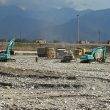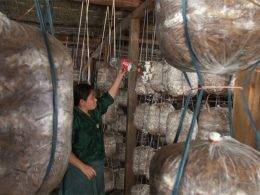Once an unassuming hilltop shrine roofed with banana leaves, the Nyingshingborang Lhakhang in Norbugang Gewog has today become a revered spiritual site, attracting pilgrims and curious visitors alike. The temple’s transformation from a modest village altar into a significant religious landmark is tied to an unexpected royal encounter nearly a quarter century ago.
At the heart of this transformation lies a small monkey statue affectionately known to locals as Meme Zala. The statue, once seen as just another curious figure in the village, is now regarded as sacred — a change sparked by the visit of His Majesty the Fourth Druk Gyalpo to Norbugang in 2001.
According to residents, the turning point came when His Majesty was trekking on foot from Nganglam to Norbugang and came upon the modest structure. Despite no formal indication of its significance, His Majesty walked directly to the then-obscured temple, navigating fallen trees and blocked paths with what locals describe as uncanny certainty.
“We hadn’t told His Majesty it was a temple,” recalled Wangda Dorji, a resident of Nyingshingborang. “But he went straight there and rested for almost 15 minutes before entering.”
At the time, the structure was far from a formal temple. The monkey statue sat exposed outside, and the roof was little more than a temporary shelter made from banana leaves. But something during that visit changed the perception of the place forever.
Local lore — passed down through community members and even shared by members of the Royal Family — tells of a mysterious moment. As His Majesty approached the statue, it reportedly began to bow toward him. The statue, initially thought to be wooden, seemed to take on a life of its own in His Majesty’s presence. This account, shared by Nima Tshering of Nyingshingborang, only deepened the statue’s sacred status.
His Majesty’s reverence for the site did not end with that first visit. In December of last year, His Majesty and members of the Royal Family returned to the temple. During the visit, His Majesty inquired about the temple’s needs. When the caretaker humbly mentioned the struggle of maintaining a roof made of banana leaves, His Majesty immediately granted the community CGI roofing sheets.
“His Majesty noted that the temple had changed a lot — in the past, rain would seep through the leaves,” said Rinzin Norbu, another local resident. “Now it’s protected and beautiful.”
Indeed, the changes have been profound. With support from the Tarayana Foundation, Pema Gatshel district, and the Nganglam dungkhag administrations, the temple was completely rebuilt. Consecrated by Vairochana Rinpoche, it now stands as Sangag Chöling Dongag Tempaling, a fully-fledged place of worship.
Caretaker Jamyang Leki now performs regular smoke offerings and rituals, praying for national well-being. The sacred site has become not only a symbol of faith, but also a source of community pride.
“People come here seeking blessings. We see it now not just as a statue, but as a relic — something deeply meaningful,” Leki said.
Despite the mystery still surrounding Meme Zala’s origins, its spiritual significance continues to grow. For the people of Norbugang, the temple is more than a monument — it is a living reminder of a royal blessing and the quiet power of faith.








